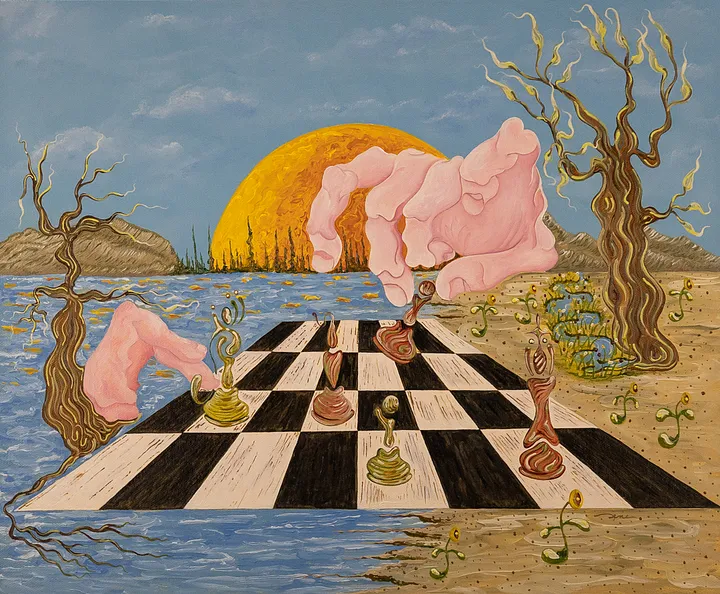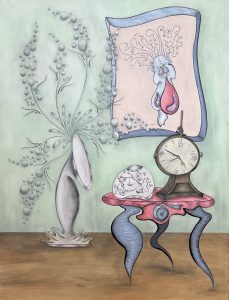Part 3 of 5: This article is the third article in a series prepared for The 13th Annual International Conference on the Image, “Here Comes the Metaverse: Designing the Virtual and the Real.” My presentation is entitled: Seeing is Believing: The Ethical and Legal Ramifications of Digital Image Manipulation.
In the previous article in this series, (alternative link), we asked: So what if we manipulate images? In this article, we answer that question and demonstrate how harmful image manipulation can be to our society, our psyche, and our democracy.
Yes, our democracy. I went there.
PHOTOGRAPHS ARE REAL
We are aware most people (80%) cannot identify fake from genuine news, but with images, people are completely trusting. People not only trust photos as accurately representing reality, but also are not well-versed in image manipulation techniques. Unless you are told you the image is art, or regularly use filters and Photoshop, you are in danger of deeming a manipulated image to be reality.
You may recall in the prior article, I offered the definitions of image, pictureand photograph. The fact is, when we look at a painting, like the surreal example above, by artist Gene Stout, we know that it’s an imaginary picture, not a realistic photograph. It’s fantastical. When we look at a digital or even a printed photograph, we presume, often unconsciously, it is an exact likeness. We call this psychological reaction iconicity: a photo resembles what it represents and faithfully shows what the eye would see if observing that place and that moment. We also instinctively believe that photographs have indexicality: that the photograph documents exactly what happened. We trust photographs as reality. And therein is the reason image manipulation is so dangerous.
Statement from the preamble to the National Press Photographers Association (NPPA) Code of Ethics: “Photographic and video images can reveal great truths, expose wrongdoing and neglect, inspire hope and understanding and connect people around the globe through the language of visual understanding. Photographs can also cause great harm if they are callously intrusive or are manipulated.”
Experts declare photographs are to be a mirror to the world — not a looking glass. That photographers are pointers, not painters. With rampant image manipulation, those standards are no longer reliable.
Add to our proclivity to trust blindly in the reality of a photograph the fact that we recall images much better than we recall words. This Picture Superiority Effect is relied upon by advertisers, persuasive speakers, journalists, and publicists. They know an image is worth a thousand words. Which is another reason a false image is so dangerous.
If humans form beliefs of what is true and what is false based upon proffered facts, and we rely on photographs as factual, if photographs are fantastical, our beliefs are skewed. If our beliefs are skewed, what we prioritize is altered. Our value system is disturbed. Consider the TIME magazine controversy where OJ Simpson’s mugshot was darkened. How would — did — that act alter society’s perception of the man?
Manipulation can also change our shared cultural mythos. As a communication theorist, I wonder if image manipulation has far more power than we appreciate. The Image Act Theory, for example, postulates that altering an image is not simply visual but social: defamatory or deceptive. Because we trust photographs as depicting what is real, manipulated images can alter public sentiment. Can influence elections. Can change perception.
Consider just recently when old and mis-captioned photos were used for news reports from the Ukrainian conflict. True, these images were not manipulated, but their misuse (manipulated placement) did attempt to alter perception. It’s not merely that we manipulate a photograph — it’s why and in what context. How is that manipulated image used?
EFFECTS: INANE TO CRIMINAL
I See It, So I Believe It
Images are highly persuasive. From advertising to dating profiles to political campaigns, manipulated images are used to persuade. A person of average intelligence, children, and the elderly (who are particularly trusting of photographic images), are easiest to persuade. Add manipulated imagery, and you compound the proclivity with trickery.
And we see images used to persuade all around us. Beauty filters smooth skin, whiten teeth, enlarge eyes or lips, narrow noses, erase eye bags and skin imperfections, slim the face and body — and even allow application of virtual makeup! The once unremarkable face creates admirers.
What about the use of manipulated images in sales? The photos of my house when I sold it last year shocked me. The agent was confident the HDR, high-dynamic range photos were acceptable. I was uncomfortable. My house looked like a cartoon. I prefer realism. The agent insisted. I suppose potential buyers know they manipulated the images for artistic purposes. But not all image manipulation is so obvious. Or so innocent.
Body retouchers report digital manipulation ranges from innocent removal of a few lines to “blatant misrepresentation of what a product can do.” The intent is aspirational marketing: motivating consumers to buy a product so they can look that way, feel that way, live that way. Retouchers report thinning models, thickening models to a healthy appearance, hiding shadows of protruding bones. Want to see a before and after and the entire process? Check out this video. It may surprise you at the extreme editing done to the model. If you are wondering about celebrity edits, check out the results from the National Academy of Sciences.
Consider: one could eliminate a competitor with an image to make its product appear flawed or dangerous.
The Lie Became Truth
“The past was erased, the erasure was forgotten, the lie became truth.” George Orwell, Part 1, Chapter 7 Nineteen eighty-four (published in 1949)
Accusations of image manipulation for propaganda and political operations range from the altering of the Zapruder film to removing Trotsky from photos with Lenin. Image manipulation is used to imbue political characterswith attractiveness, youth or maturity, strength and dominance, and honesty or warmth. You can view a trove of manipulated propaganda images through Georgia Tech’s site. These include:
- Mussolini having his horse handler removed from a photograph so he could appear more powerful.
- Champagne bottles removed from the table to enhance Brezhnev’s reputation.
- The University of Wisconsin at Madison’s addition of a black student, Diallo Shabazz, into a brochure cover so they could tout diversity. (This was after they searched for photos that would show diversity and found none.)
Direct or purposeful image manipulation is far worse than restricting photojournalists’ access to political affairs.
Every Picture Tells A Story, Don’t It
I do not think the public cares if it is a little lie or a big lie As far as they are concerned, once the shutter has been tripped and the moment has been captured on film, in the context of news, we no longer have the right to change the content of the photo in any way. Any change to a news photo — any violation of that moment — is a lie. Big or small, any lie damages your credibility. — John Long, NPPA Co-Chair and Past President
Image manipulation dilutes faith and erodes public trust in our Fourth Estate: The Press. We depend on the press and journalists to investigate and expose those in the Executive, Judicial and Legislative branches of the government. If we cannot rely on the truth of a news article, democracy is doomed.
Consider this: “… the viewer expects the objects in an editorial photograph to be no more or less than the objects the photographer saw through the viewfinder.” Or Frank Van Riper’s observation: “news photographs are the equivalent of direct quotations and are therefore sacrosanct.”
In 2009, a New York Times Magazine photo essay, Ruins of the Second Gilded Age, depicted incomplete construction projects resulting from the economic crisis. Although the article asserted the images were unaltered, a random blogger called “bullshit” (his words, not mine), and exposed the manipulation. The images were altered, and the projects were faked. The intent to deceive the public to create this economic drama was obvious.

Or consider the subject image of Van Riper’s commentary: Brian Walski, a Los Angeles Times photographer, captured several images while on assignment during the conflict in Iraq. His error? He composited two images to create drama. They fired him. Photojournalists, although pained for their peer, were unsympathetic. (See Van Riper’s comment, above.) Fine art photographers, like Pedro Meyer, were outraged, arguing the creative edit did not alter the content but produced a better picture. One that offered a sympathetic story.
Huh?
Alteration of an image to produce a picture or digital art is not only acceptable but also desirable. The artist is creating a fiction. The photojournalist is charged with delivering reality. Can we no longer differentiate between the two? Once again, allow me to quote Van Riper: “In this, I am reminded of what a Washington Times shooter once told me. On a computer outside the paper’s darkroom, she said, there was plastered this flat admonition and warning: “If you can’t do it in the darkroom, don’t do it here.”
Prove It
Science depends on image accuracy. Whether we capture an image of the universe or cancer cells, we rely on the depiction. According to Douglas Cromey, over 50% of scientific journals have no ethical guidelines for image submission. They can manipulate the photograph in any way required to substantiate the claims within the research. And the incidence of fraud in scientific research images is a serious area of concern.
Our courts also favor photographic evidence. Police and private investigators use digital cameras; lawyers present digital images as evidence. The Federal Rules of Evidence, enacted in 1975, presumed the reliability of analog photographs. Because of iconicity and indexicality, triers of fact (like juries) believe a photo mirrors reality. A picture conveys information clearly (arguably). We can understand faster it than reading a paragraph about an incident or situation. And images are historically trustworthy.
Until ease of access and ease of use of modern image manipulation technology interfered with that trust.
Photographs, videos, recordings, and other objective evidence, like DNA or fingerprints, are held sacrosanct. We weigh heavily on such evidence, even against expert opinion or scientific or statistical evidence. We can touch objective evidence. It’s real. As long as it’s relevant, we only need to worry about authenticity. No interpretation is required.
But can we trust photographs as objective evidence? Do we know anymore if images are authentic? Would an expert or the photographer need to testify that the photograph faithfully represented what the eye would have seen? Gregory Stone, the Director of Publications and Media Production at UMass Dartmouth, was quoted to say: “I don’t think you can use photography or video anymore as evidence. It’s too easy to manipulate…I don’t see how it’s going to stand up anymore.” Experts demand a reevaluation of the long-standing rules and implementation of safeguards like digital signatures.
He Who Takes My Good Name…
Consider the deepfake: synthetic images or audio recordings altered with intelligence software, so it seems as if a real person did or said something he or she did not do or say. The practically undetectible manipulation could be used positively or to discredit an individual or his or her testimony, defame or destroy an individual’s character, or make a person seem a criminal. The original Reddit user who used image and audio manipulation to superimpose celebrity images onto pornographic videos coined the term deepfake.
Even a simple photographic manipulation can destroy a person’s good name. For example, for years bibliophiles tossed around the rumor that Alice in Wonderland’s author, Lewis Carroll (Charles Lutwidge Dodgson) was a pedophile. The rumor, based on a number of slanderous articles, was validated when contemptible photographs entered circulation. Every photo is a fake.
Consider the social and cultural effects if deep fakes depicted a:
- Public official shown accepting bribes
- Public official or private citizen acting in a racist manner or committing a hate crime
- Public official or private citizen made to appear at a location or to participate in an incident
- Public official or private citizen engaging in adultery
Theft of Property & Misrepresentation
On this list of dangers, copyright infringement may seem innocuous. However, the economic damage to photographers is extreme. Any fluent computer user can right-click or screen capture an unprotected image and represent that image as his or her own. Stock photos can be altered or combined to be unrecognizable from the original. Without a negative, and with digital metadata erased or altered, a photographer’s property can be stolen. If you recall my first article in this series, the faux-photographer I investigated was merely compositing stock photography and representing himself as a photographer.
And what about photography as a career and an art form? How can a straight photographer compete with a digital artist on this uneven and surreptitious playing field? A photographer enters a contest. Mister Faux Photographer, who is creating digital art and not standing on the beach in the wind and fighting biting flies, enters the same contest. Mister Faux Photographer wins because his photos are so unique and amazing and… But Mister Faux Photographer is not submitting photographic images. He is submitting digital images, digital art manipulated beyond the limitations of a light-sensor can capture. Worse, the straight photographer print sales suffer because the public believes photos should look a certain way. It’s unfair competition.
Snapchat Dysmorphia
Snapchat Dysmorphia — The psychological effects of beauty editing are devastating. Research conducted in 2016 found edited images were rated higher than natural images for 144 of the teen girls tested. These market-driven, artistic edits result in unrealistic beauty standards and are directly correlated with negative body image. Yet, causation is in question: Whether only those who have a negative body image use the filters or the filters cause negative body image remains in question.
No matter the chicken or the egg, the manipulated images have been shown to increase rates of body dysmorphic disorder. Manipulated images and the ability to manipulate one’s own image have a disassociative effect: Users cannot face the image in the mirror because filters give the expectation the user should look like the manipulated image. Even if users realize the manipulated images are unrealistic, they still desire that skin, that small waist, that long neck. Filters have also resulted in an increased demand for cosmetic surgery. For years, the AMA (American Medical Association) has argued against any manipulation of fashion images. “We must stop exposing impressionable children and teenagers to advertisements portraying models with body types only attainable with the help of photo editing software.”
SUMMARY
Photo manipulation is desirable for creative reasons, but misused, is dangerous. We believe photos capture reality. Images powerfully persuade and imprint on the memory. Images sway public opinion and create unrealistic expectations of how we should look. We rely on images for scientific research, legal outcomes, and prioritization.
We need to acknowledge unregulated or uncontrolled image manipulation is dangerous.
References are embedded within the article, and you can peruse the complete list of resources here.



